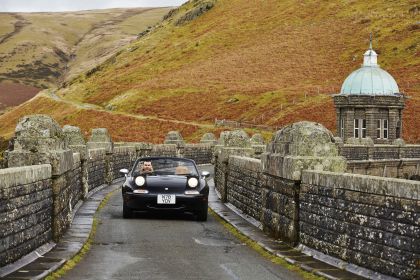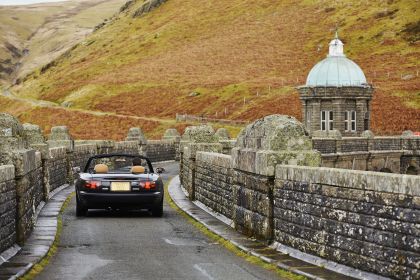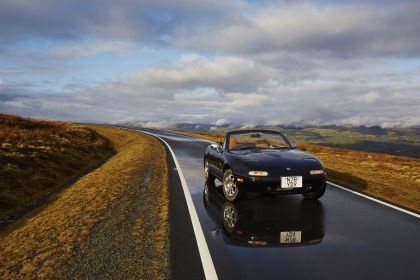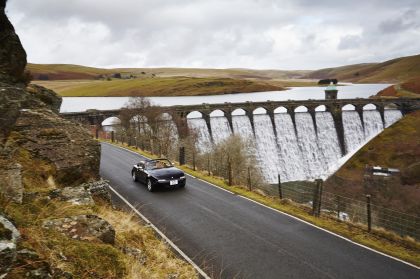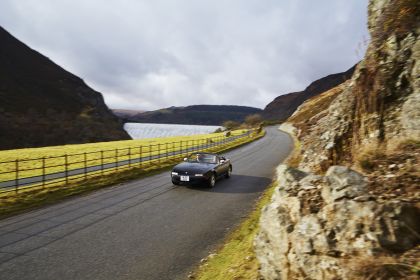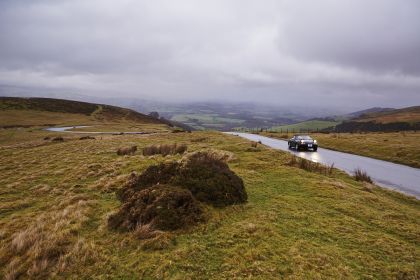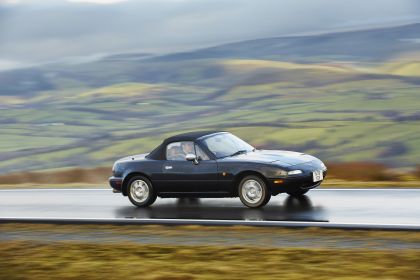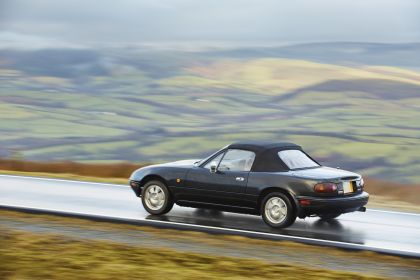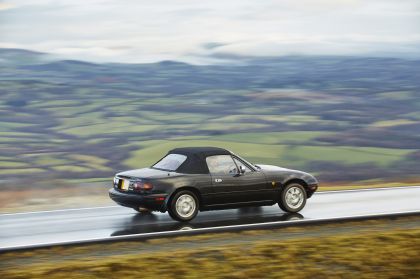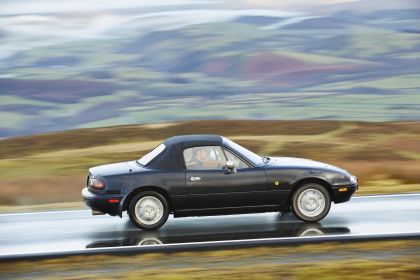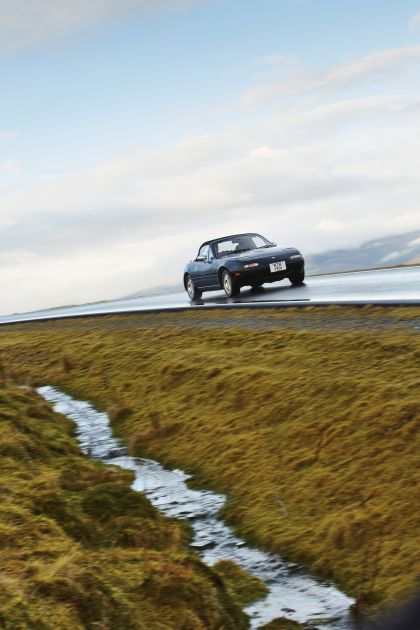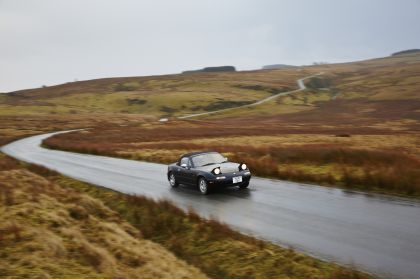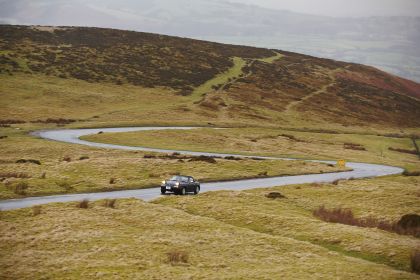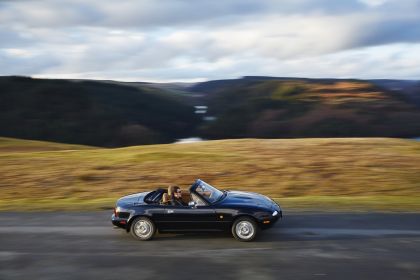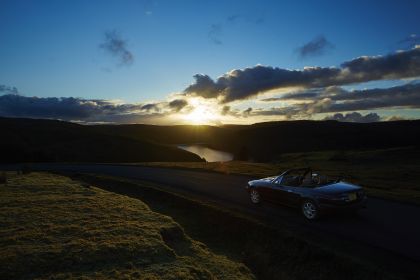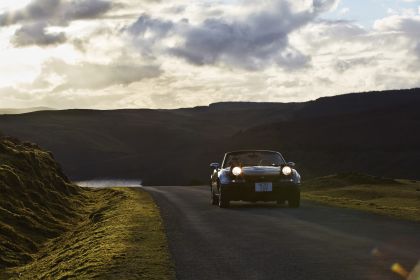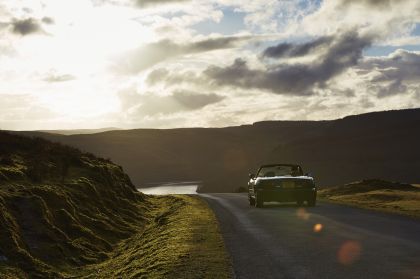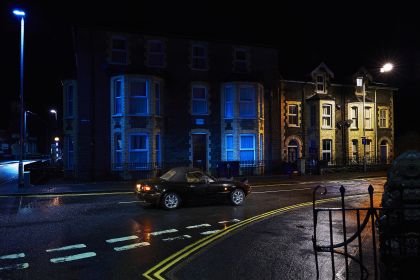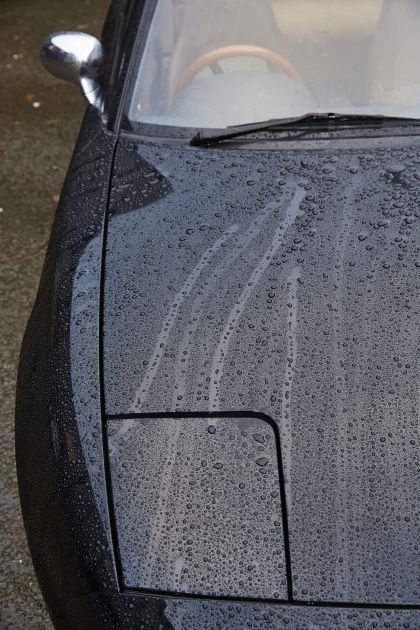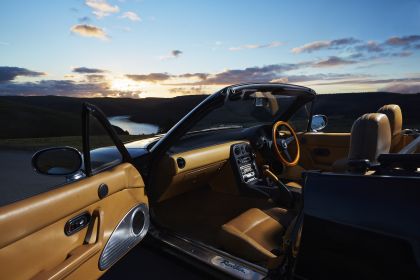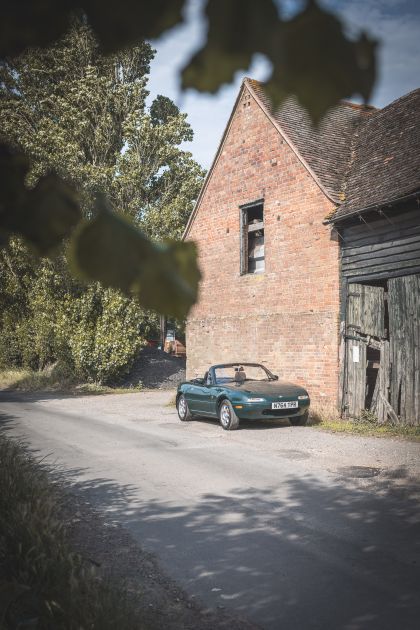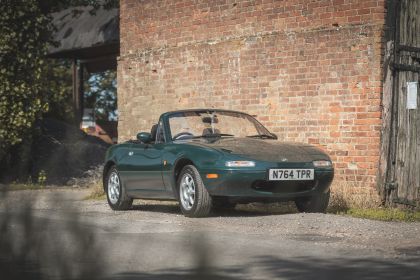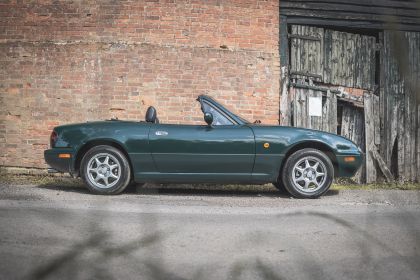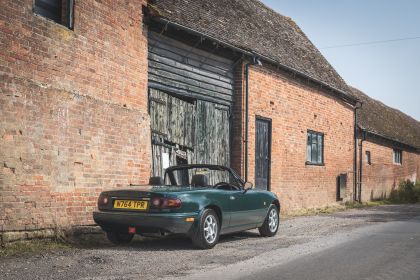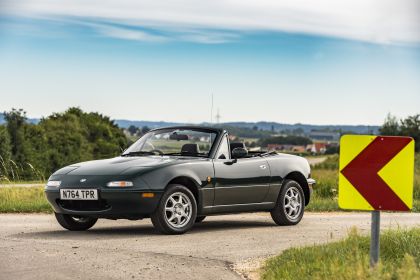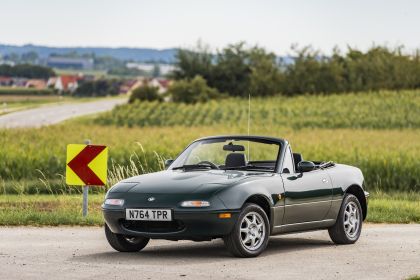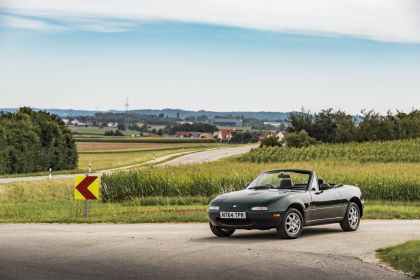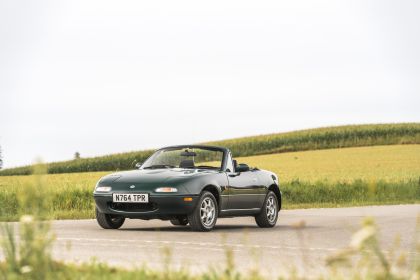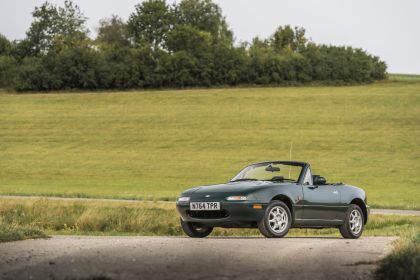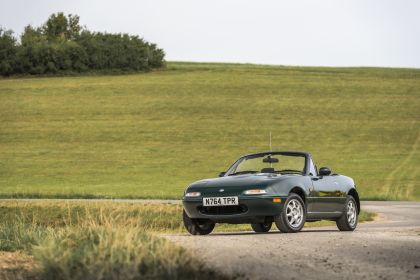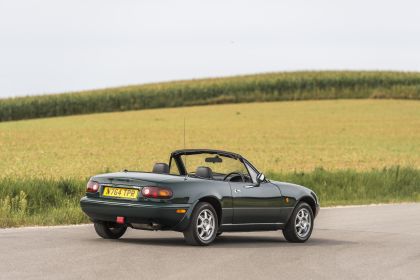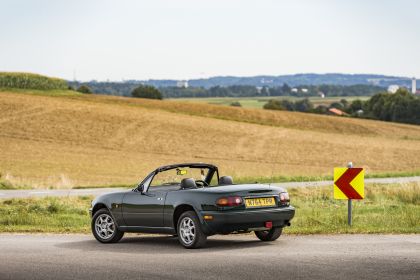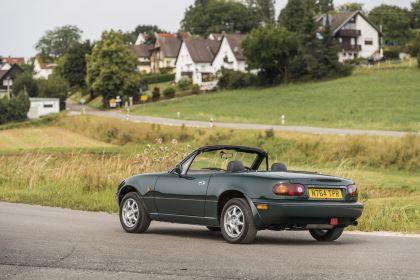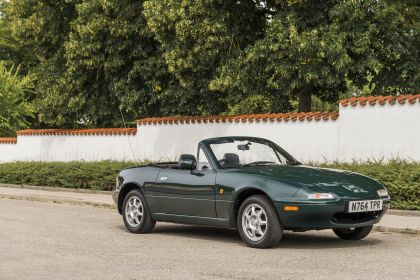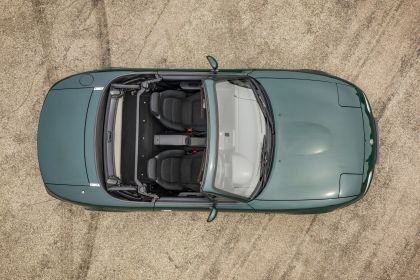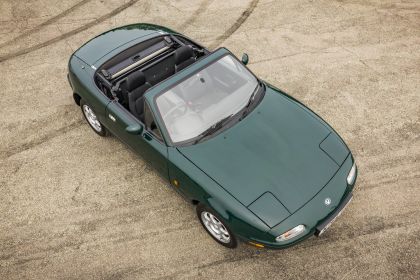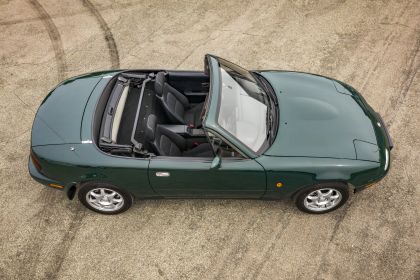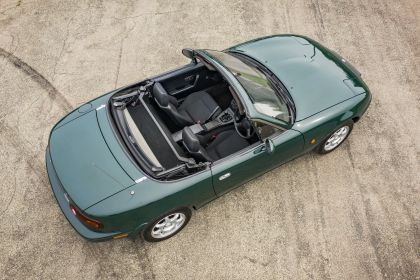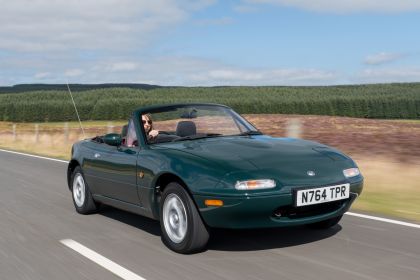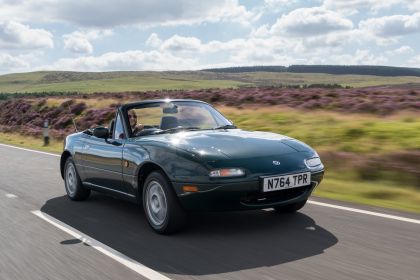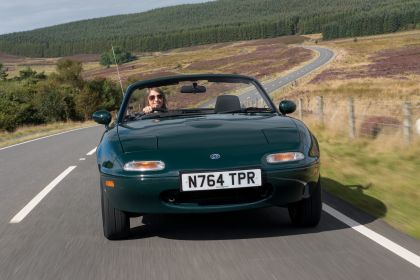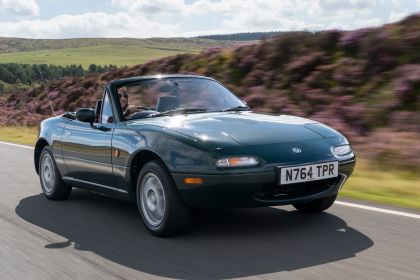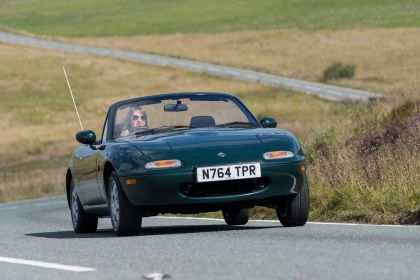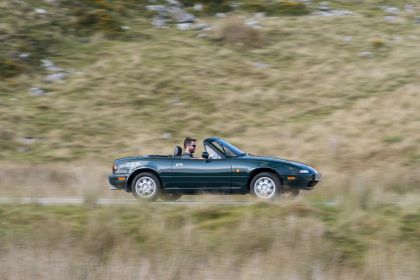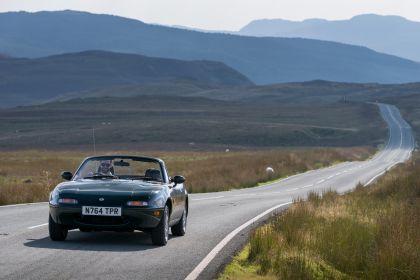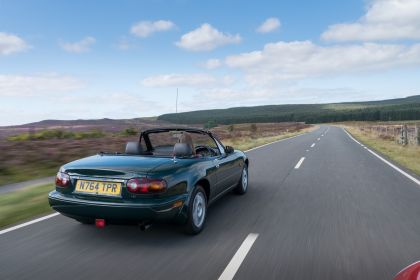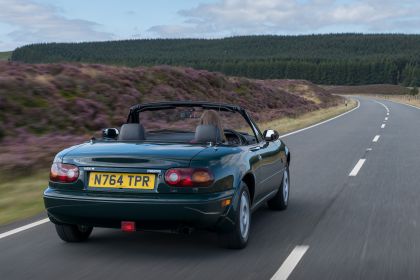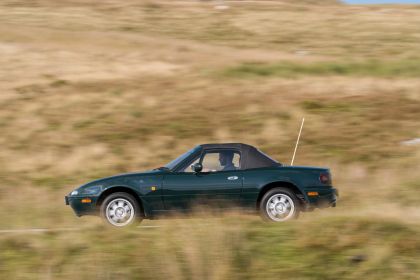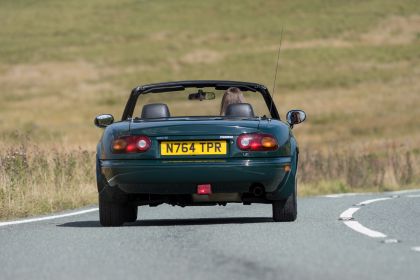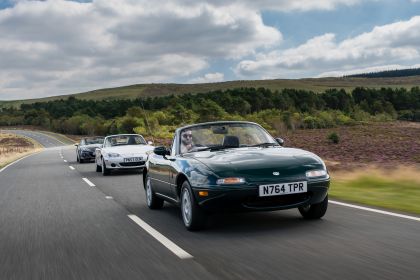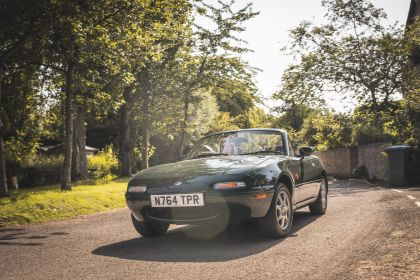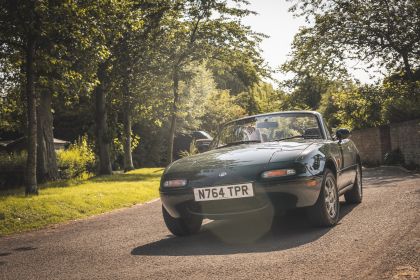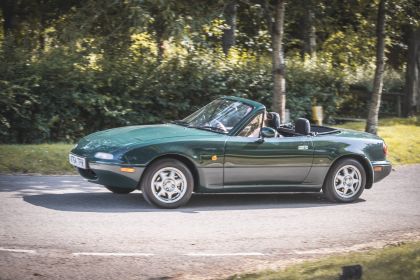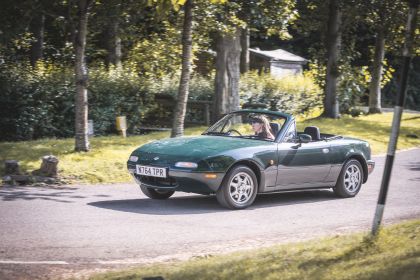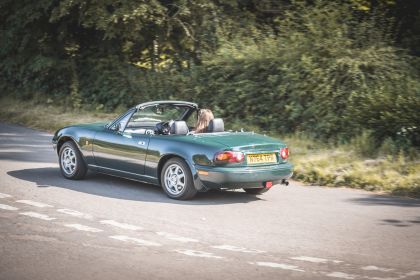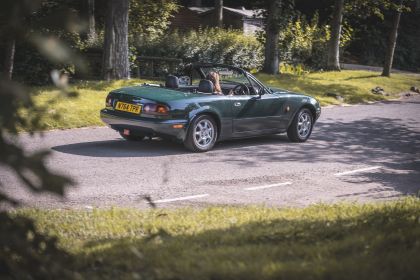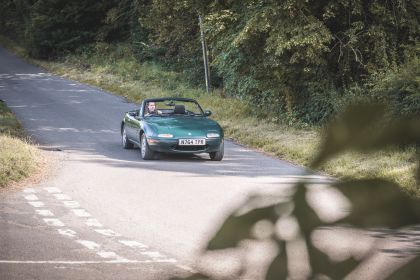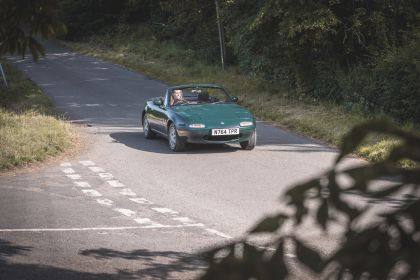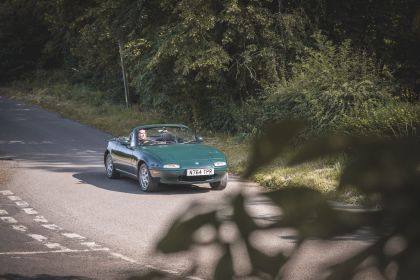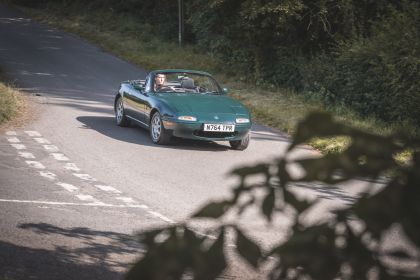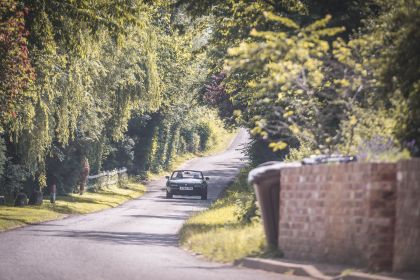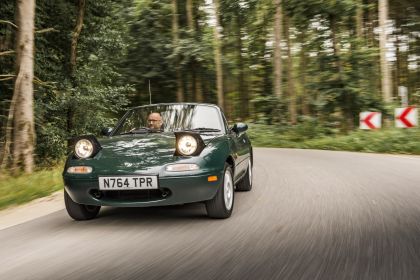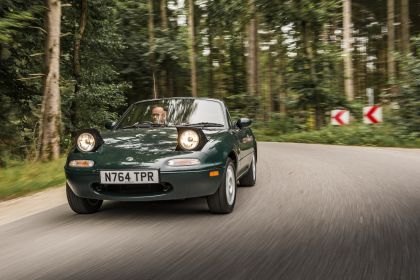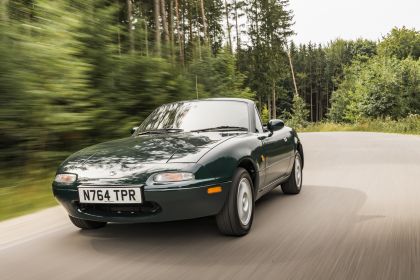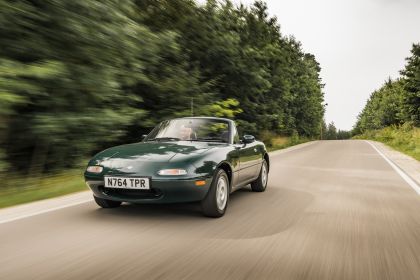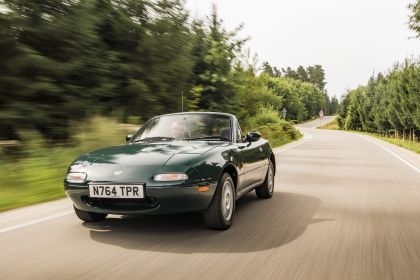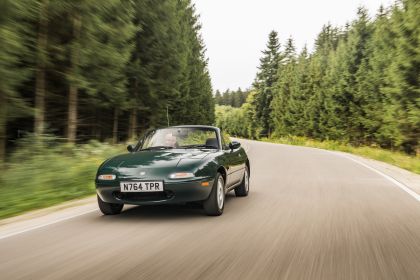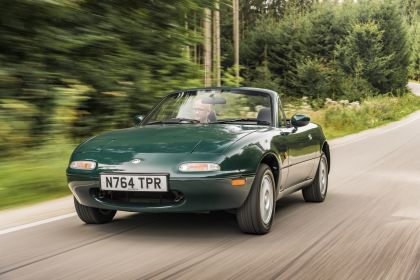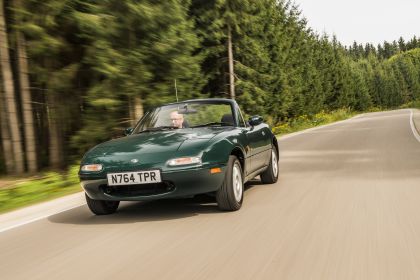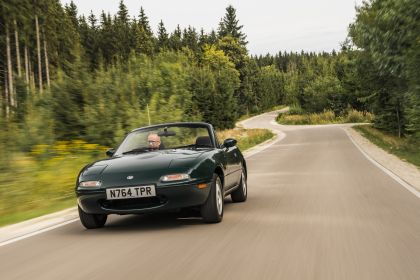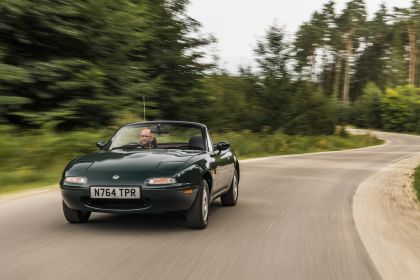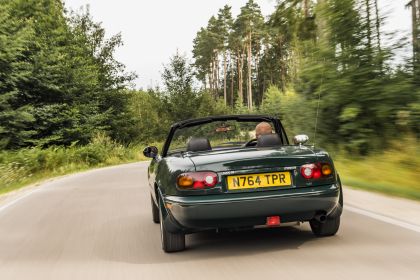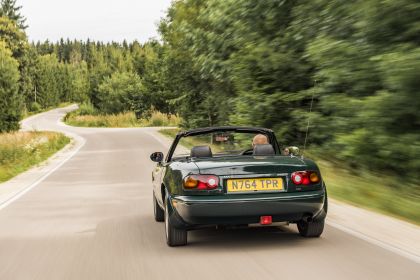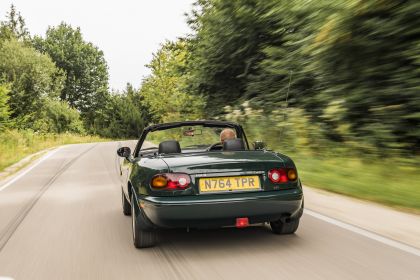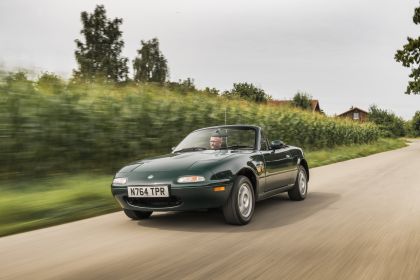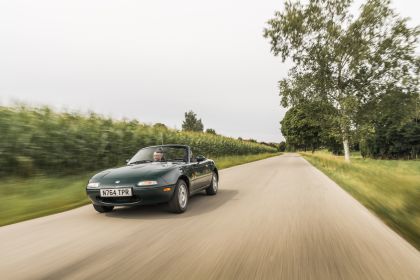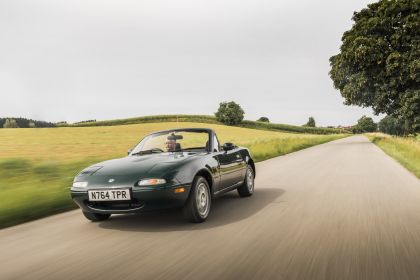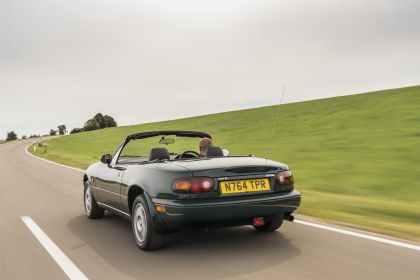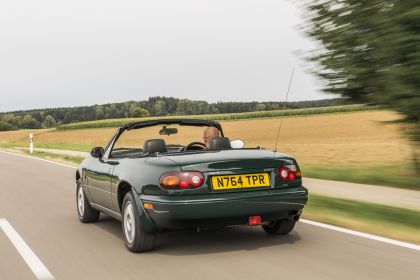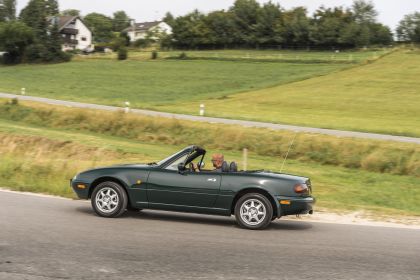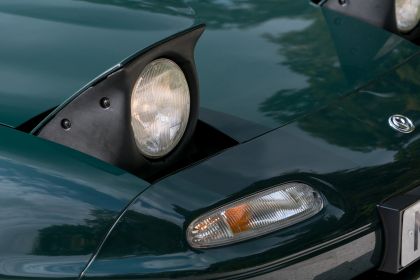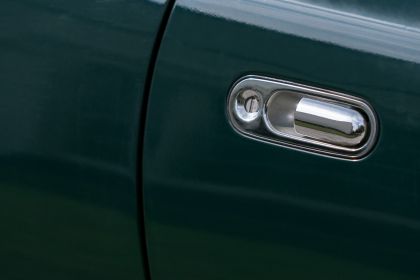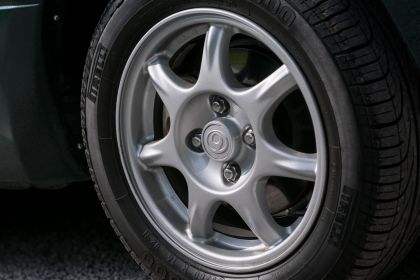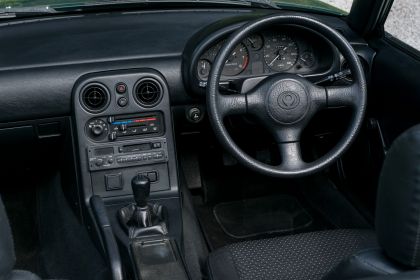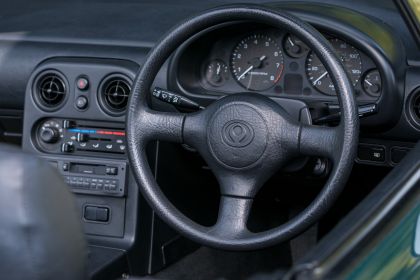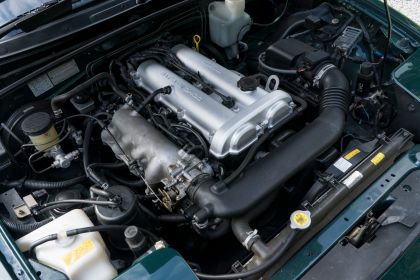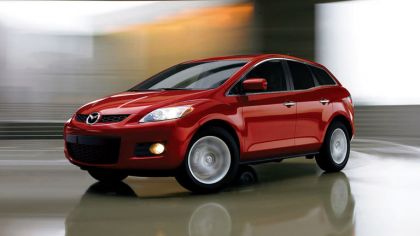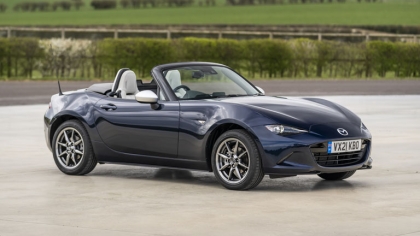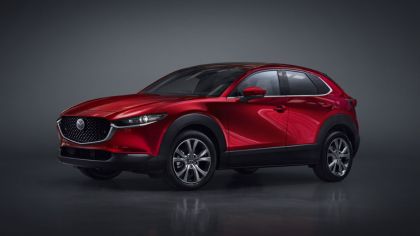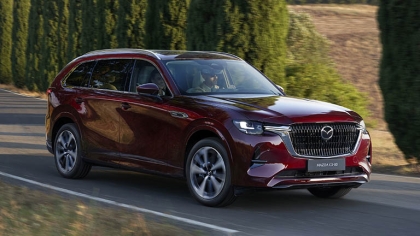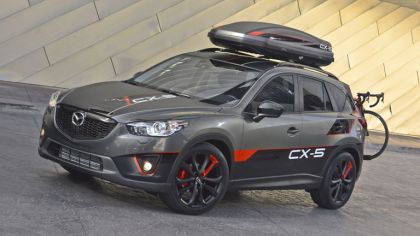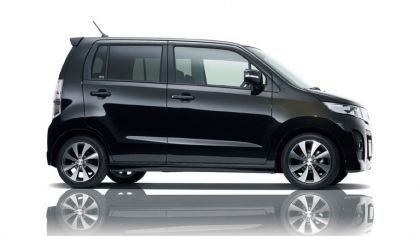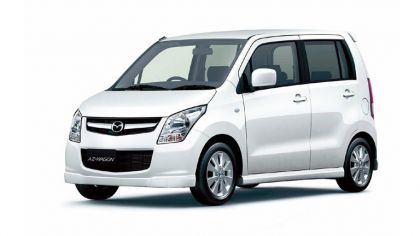The original MX-5 was inspired by the lightweight sports car (LWS) models that were incredibly fashionable in Europe and America in the post-war years through to the 1960s. Only a threat to outlaw open cars balked their popularity. However, this attractive concept would be revived using the very latest technology, adding modern reliability into the equation. It would be a new generation car for a new generation.
The Concept
Lightweight spor tscars were primarily designed to be fun to drive, with their nimble handling and unbeatable feedback giving the driver a feeling of what Mazda calls Jinba-ittai - a term that roughly translates into a oneness between horse and rider.
The majority of traditional LWS models employed a front engine, rear-wheel drive (FR) layout, and a two-seat convertible body. Mazda would take this package from a bygone age, adding elements that would allow the new car to hold its own heading into the 21st century. To achieve Jinba-ittai, a number of key targets were formulated:
- All components must gel in a way that provides the ultimate form of communication between the vehicle and its driver, whilst also allowing a sensation of unity with nature.
- The creation of a cockpit that appeals to the five senses, focusing the driver in order to extract the car's maximum potential.
- Driver enjoyment mus t be put first, ahead of high performance.
- The car must be endowed with quick and direct responses for perfect control.
In order to obtain the desired Jinba-ittai feeling, a fishbone chart was created as a checklist. The backbone was connected to six main headings - styling, handling, braking, driving enjoyment, tactile sensations, and sound - which in turn where connected to a series of pointers and specifi c components that helped please the senses within a given category. Constant reference to this now-legendary chart would ensure perfect harmony between the car and its driver.
However, this chart was not only there to help create an exciting sportscar, it would also ensure the owner would remain happy with it many years into his or her ownership. This noble goal was actually a stated theme during development, and needles s to say, the Jinba-it tai concept has been car ried over for eac h of the four generat ions of Mazda roadsters.
Packaging
In order to realize the targets set out during development, the Mazda MX-5 was remarkably compact. With a wheelbase of 2,265mm, it had an overall length of 3,970mm, a width of 1675mm, and a height of just 1,235mm. These dimensions ensured that a low body weight could be achieved, generally enhancing the car's overall performance characteristics. It was in the packaging, though, where the concept was honed, with the final product displaying 50:50 weight distribution, a low yaw moment of inertia, and a low center of gravity - essential ingredients in sportscar design.
To improve weight distribution, the traditional FR layout was refined by moving the engine back over the front axle as far as possible, almost to the point of the car having a front midship configuration. Other heavy components, such as the fuel tank, were also moved within the wheelbase, all with the goal of balancing the vehicle's weight equally over the front and rear axles and lowering the vehicle's yaw moment of inertia in mind. Further thought can be seen in the aluminium bonnet (which reduced overall weight as well as lowering the center of gravity), and the lightweight battery being situated in the trunk to counter the engine's bulk. At the same time, enough luggage space was provided for a short trip for two.
Other impor tant factor s in enhancing the 'Jinba Ittai' experience included the adoption of a double-wishbone suspension on all four wheels, and a special item called the Power Plant Frame (or PPF). The PPF was an aluminium structure that braced the tail of the gearbox and the nose of the differential casing, vastly improving response to throttle action.
The trademark packaging seen in the original MX-5 is a reflection of Mazda's philosophy for all the roadsters that followed...
Exterior And Interior Design
Not surprisingly, the exterior styling philosophy first and foremost called for lines that would hold an exceptional level of appeal. This is easier said than done, but using continuous curves, the designers drew on the subtleties of Japanese beauty, using light and shadow to play on the panels and create movement in much the same way as a traditional Noh mask would when worn by an actor. These vibrant reflections - later coined 'Echo and Sparkle' - can still be seen in Mazda's cars to this day, although Soul of Motion is the current term used at the company.
The open car configuration led to a huge amount of research on windscreen angles, mirror shapes and sizes, and so on, in order to control buffeting in the cockpit. A signature feature of the first generation MX-5 was the pop-up headlights, which were a Mazda sportscar hallmark, while the rear lights were styled to give the roadster a distinctive identity at the other end. Initially, colours were restricted to Classic Red, Mariner Blue and Crystal White, with Japan adding a Silver Stone Metallic shade to the palette.
Japanese culture was called upon once more for the interior, with a traditional tearoom providing the inspiration; this t ranslated into a t ight space with simple, minimalist ic furnishings, and a feeling of anticipation. In t ypical LWS fashion, a T-shaped dashboard was employed, complete with large diameter, easy-to-read gauges, while high-back seats were specified to hold the passengers firmly in place.
Chassis Development
The suspension was designed from a clean sheet of paper. As such, in a first for Mazda, a double-wishbone suspension was selected for both the front and rear, giving engineers and users alike a greater degree of freedom in setting the car up. It also had the advantage of keeping the tires in better contact with the road, giving consistent handling.
In line with Jinba-ittai goals, analysis and testing methods were changed in order to reduce mass to a minimum whilst retaining strength, and, as a result, Mazda was able to bring the weight of the double-wishbone suspension down to that of a comparable strut suspension. Costs were also kept in check by clever design work, such as common dies for suspension arms and crossmember components.
Steering was via a rack-and-pinion system, with the rack diameter increased to enhance direct feel through the wheel. A manual (non-assisted) and power-assisted steering set-up was offered, with the former giving a fast 3.3 turns lock-to-lock, while the power-assisted (PAS) option reduced this figure to just 2.8 turns lock-to-lock.
Ventilated disc brakes were specified up front, with solid discs used for the rear. In a bid to reduce the yaw moment of inertia, callipers were placed on the trailing edge of the front discs and the leading edge of the rear ones.
The 185/60 R14 tires were mounted on 5.5J wheels, which were supplied as either plain steel rims or seven-spoke alloys (seven spokes were chosen for their dynamic looks, and to reduce weight compared to the traditional eight spokes). The tires were designed especially for the Mazda roadster, the tread pattern offering enjoyable handling, while a 10% weight saving was a useful bonus.
The Power Plant Frame (PPF)
Made from l ightweight forged aluminium alloy, with strategically-placed cut-outs to retain strength but keep weight to a minimum, the Power Plant Frame was designed to deliver a more direct level of feel for the driver by reducing the timelag created via the movement of components in the driveline. With an FR layout, the nose of the differential casing constantly tips up or down a small amount in tune with acceleration and braking, but the PPF eliminates this movement, giving a noticeable improvement in throttle response and refinement. An addit ional benef it was the reduct ion in mount s and strengthening pieces required, meaning a further trimming of body weight.
The Powertrain
The powertrain was naturally developed to provide stimulating per formance, but providing the owner with an at tractive engine bay was also part of the MX-5 concept.
The starting point was the transverse-mounted engine from the second generation FF 323/Familia, which was converted to sit in an inline position with rear-wheel drive. In its new guise, with a cast-iron block and a pentroof aluminium alloy head with a central plug and revised valvetrain mechanism, the 16v four-cylinder 1.6-liter DOHC unit was given the B6-ZE (RS) moniker.
The B6-ZE (RS) had a 78.0mm bore and an 83.6mm stroke to give a displacement of 1597cc. With a 9.4:1 compression ratio and an electronically controlled fuel-injection system, it developed 115ps at 6,500rpm, along with 135Nm of torque at 5,500rpm. In line with development goals, the unit's redline was increased to 7,200rpm (as opposed to 7,000rpm for the 323/Familia engine) thanks to a fully-balanced crankshaft and l ightweight con-rods, while response was dramatically improved throughout the rev-range.
An aluminium alloy oil sump and radiator were employed to save weight, along with a stainless steel ex haust manifold instead of a traditional cast-iron one. Mechanical noise was reduced to a minimum, but the exhaust sound was given special attention, emphasizing the car's sporting nature.
The engine compartment's appearance was enhanced through the use of a cast aluminium camshaft cover that accentuated the car's high-performance twin-cam set-up. Other than the embossed lettering, it was deliberately left with a plain finish to give a pleasing look of functional beauty. Doubtless, enthusiasts will have spent many happy hours polishing it over the years!
Regarding the close-ratio five-speed manual transmission, engineers concentrated on making the shift quality positive combined with a light action. This was achieved by employing short strokes for gear selection, a low inertia clutch disc, and large diameter synchronizing cones. At the time, the 45mm 'f lick of the wrist ' stroke was the shor test domestic massproduction manufacturing techniques would allow. For the ultimate in sports driving pleasure, the MX-5 was offered with a viscous limited-slip differential as an option.
A Combination Of Lightness & Rigidity
One of the major problems with an open body is retaining the shell's rigidity, especially with cars that have been converted from coupes, unless one adds a lot of strengthening pieces, leading to additional weight. However, the steel monocoque body of the MX-5 was designed as a convertible from the very beginning of development, and with the help of the most upto- date computers available. As such, through careful design (the central tunnel and continuous lattice structure employed for the body were crucial elements in securing top class rigidity, as well as the A-posts and sills), it was exceptionally strong, but tipped the scales well within targets.
To improve handling, all overhanging parts were made as light as possible, with the bumper beams being an excellent example, made from resin using the latest blow molding techniques.
Regarding the soft-top, good use was made of the experience gained with the RX-7 Cabriolet and domestic market Familia Cabriolet, as well as valuable input from the respected English engineering consultants, the International Automotive Design company (IAD). The end result was a practical and well-trusted convertible top that was easy to operate, with a lightweight zip-in vinyl rear window offering greater ventilation options for the driver. For those who wanted the utmost comfort for winter weather, an attractive detachable hardtop made from sheet molding compound (SMC) was made available as an option.
For North American market, driver's side SRS airbag was a standard equipment for MX-5 and it was the first fitment for Mazda cars ever sold in the global market.
Production Changes To Match The Era
The MX-5 was forced to undergo a number of changes to meet regulations and so on, but with each upgrade, the original concept was kept without question.
In 1990, a four-speed automatic transmission was offered as an option, and in the same year, the V Special grade with green paintwork and a tan leather interior was added to the line-up. 1992 saw BBS wheels and Bilstein dampers introduced for the S Special, while the following year brought with it airbags and side-impact bars for added safety, along with a 1.8-liter BP-ZE (RS) engine that delivered 130ps at 6,500rpm and 152Nm of torque at 5,000rpm. At the same time, the final-drive ratio was revised to 4.100:1, rigidity increased, and the suspension improved, all without any loss of the Jinba-ittai feel that had made the car so popular.
In 1995 a 1.6-litre engine with 90ps was introduced next to a 1.8-litre engine. While low-speed running quality was enhanced, the adoption of a new ECU and a lightweight flywheel helped top-end performance as well.
